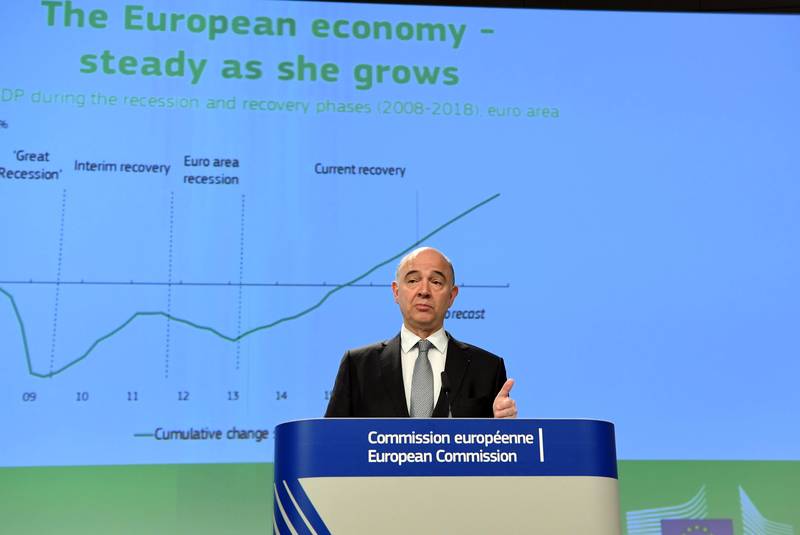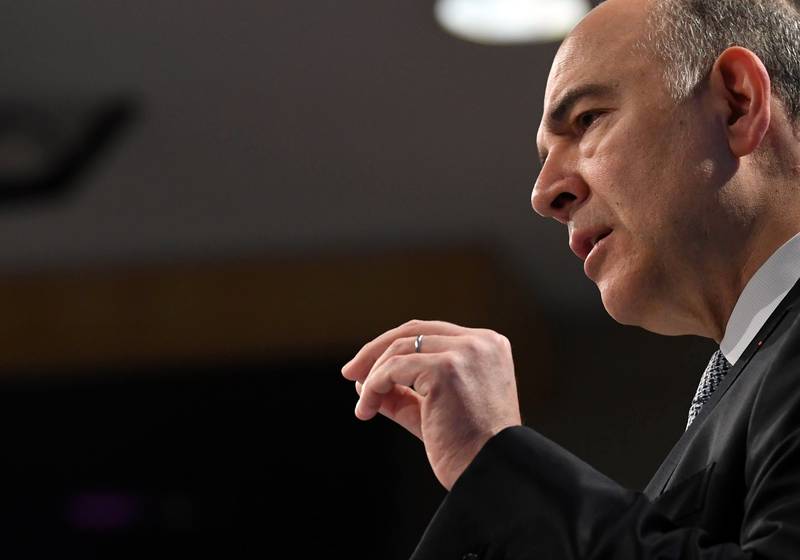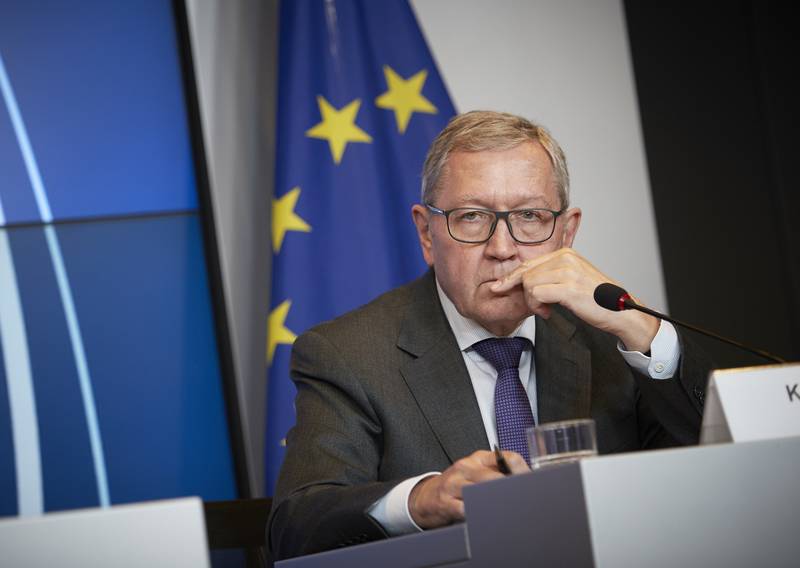EU Spring Economic Forecast - Optimism in Times of Uncertainty
Adelina Marini, May 16, 2017
 "Uncertainty" is the focus of the European Commission's spring economic forecast presented last week. The topic is presented entirely in scientific terms, apparently aiming to give a meaningful explanation as to why economic forecasts are increasingly diverging from reality. This explanation is particularly important in the context of the still serious differences between the European Commission and the International Monetary Fund in terms of Greece's potential to fulfil the agreed objectives in the Third Rescue Program (more on this in a separate text), the post-programme period, and especially in terms of the sustainability of its debt. It is also important because policy-makers are trying to guess exactly what the “cost” will be for the euro area or individual members of the effect of sudden political shifts in a member state. The forecast was announced four days after the finale of the presidential election in France brought tremendous relief, as a scenario for a very sharp political and economic U-turn in a systemically important member for the euro area's survival has been avoided.
"Uncertainty" is the focus of the European Commission's spring economic forecast presented last week. The topic is presented entirely in scientific terms, apparently aiming to give a meaningful explanation as to why economic forecasts are increasingly diverging from reality. This explanation is particularly important in the context of the still serious differences between the European Commission and the International Monetary Fund in terms of Greece's potential to fulfil the agreed objectives in the Third Rescue Program (more on this in a separate text), the post-programme period, and especially in terms of the sustainability of its debt. It is also important because policy-makers are trying to guess exactly what the “cost” will be for the euro area or individual members of the effect of sudden political shifts in a member state. The forecast was announced four days after the finale of the presidential election in France brought tremendous relief, as a scenario for a very sharp political and economic U-turn in a systemically important member for the euro area's survival has been avoided.
Emmanuel Macron's victory over Eurosceptic far right Marine Le Pen has provoked French Economic and Financial Affairs Commissioner Pierre Moscovici (Socialists and Democrats) to say in the presentation of the forecast: "Growth is also held back by high political uncertainty, although, gradually, these uncertainties tend to wane in Europe". However, the forecast is uncertain in terms of uncertainty. The document says that political uncertainty "could" continue to decline in the coming months after the elections are complete (in Germany they will be in September and in Italy likely next year). This will lead to a stronger domestic demand. Investments could be lower than expected if problems continue in the banking sector or if uncertainty about UK exit negotiations remains, the Commission predicts.
Conditional optimism
The EC is slightly more optimistic about the economy than it was in February, so it has corrected upward its expectation for euro area growth this year from 1.6% to 1.7%. The forecast for next year remains 1.8%, same as in the winter forecast. The EC also has higher expectations about EU economy as a whole - 1.9% (1.8% in winter) for this and next year. Inflation also gives rise to optimism, though largely due to the rise of oil prices. In the euro area, inflation is expected to increase from 0.2% in 2016 to 1.6% this year. For 2018 the expectation is for a 1.3% inflation, as the effect of higher oil prices is expected to diminish by then.
Countries with the highest growth in the EU this year are Malta (4.6%), Luxembourg (4.3%), Romania (4.3%), Ireland (4.0%), followed by Hungary (3.6%), Poland (3.5%), Slovenia (3.3%), Latvia (3.2%), Slovakia (3.0%). Countries with below 3% growth are: Bulgaria, Croatia and Lithuania with 2.9%, Spain (2.8%), The Czech Republic (2.6%), Sweden (2.6%), Cyprus (2.5%), Estonia (2.3%), Greece (2.1%), The Netherlands (2.1%). Below 2% are: The United Kingdom (1.8%), Portugal (1.8%), Denmark (1.7%), Austria (1.7%), Germany (1.6%), Belgium (1.5%), France (1.4%), Finland (1.3%). The lowest growth this year will be in Italy (0.9%).
Unemployment also produces good news. In the euro area, it is expected to fall to 9.4% this year and to 8.9% next year. This will be the lowest level since the beginning of the 2009 crisis. The highest unemployment rates are in Greece (22.8%), Spain (17.6%), Cyprus (11.7%), Croatia (11.6%), Italy (11.5%). The lowest unemployment rate is expected to be the Czech Republic (3.5%), followed by Germany (4.0%) and Hungary (4.1%). According to the EC, the drop is the result of domestic demand growth, structural reforms, and other government decisions in some countries. In the EU28, in general, the trend is the same - unemployment will fall to 8.0% this year and to 7.7% in 2018. This is the lowest level since the end of 2008.
Fiscal parameters are also expected to fall. The budget deficit-to-GDP ratio in the euro area is projected to fall from 1.5% in 2016 to 1.4% in 2017 and 1.3% in 2018. The public debt-to-GDP ratio in the euro area is also expected to fall to 90.3% this year (from 91.3% in 2016) and to 89.0% next year. Countries with a budget surplus this year are expected to be: Germany (0.5%), Malta (0.5%), The Netherlands (0.5%), Sweden (0.4%), The Czech Republic (0.3%), Luxembourg (0.2%), and Cyprus (0.2%). The highest budget deficit this year will be in Romania (-3.5%), followed by Spain (-3.2%), France (-3.0%), The UK (-3.0%). Inflation will be the highest in Estonia (3.3%), and the lowest in Ireland (0.6%). What do things look like on a by country basis is once again best seen in the headlines of the forecast for the member states:
Belgium: Domestic demand drives sustained growth
Bulgaria: A balanced budget amid robust growth
The Czech Republic: Strong labour market and steady GDP growth
Denmark: Domestic demand set to drive economic growth
Germany: Firming growth supported by consumption
Estonia: Strong growth underpins catching-up
Ireland: Strong growth against external headwinds
Greece: Recovery ahead and better-than-expected fiscal performance
Spain: Strong, balanced economic growth
France: The gradual recovery of exports lifts growth prospects
Croatia: Growth set to remain strong, but risks widen
Italy: External demand and investment support modest recovery
Cyprus: Solid growth accompanied by fiscal loosening ahead
Latvia: Growth rebound driven by domestic demand
Lithuania: Improving growth outlook for both domestic and external demand
Luxembourg: Strong broad-based growth
Hungary: High private consumption and rebounding investment
Malta: Solid growth continues
The Netherlands: Positive economic conditions to continue
Austria: Favourable growth dynamics
Poland: Investment recovery and private consumption set to fuel growth
Portugal: Growth momentum gains pace
Romania: Growth momentum picking up amid fiscal deterioration
Slovenia: Investment and consumption driving growth
Slovakia: Economic growth driven by robust household consumption
Finland: Moderate growth continues
Sweden: Robust growth and sound public finances continue
The United Kingdom: Growth to moderate and inflation set to continue to rise
There are still no conditions for acceleration of economic activity as investments and wages remain hostages to the inherited problems from the crisis. Investments remain weak in the EU and the euro area, and forecasting their dynamics is difficult. When political uncertainty disappears, as well as when Juncker's investment plan starts to deliver, then a larger investment effect can be expected. However, another scenario is possible - investments to be lower than expected due to continued uncertainty stemming from difficult negotiations with the UK or ongoing bank problems. The fragility of banks continues to be a serious concern. Their low profitability is a serious structural problem, mainly caused by the accumulated non-performing loans. In other cases, the problem are inadequate business models, high operating costs and overbanking. The banking sector continues to be a hindrance to economic recovery, and will continue to be even if investments grow, the forecast says.
Wage growth continues to be held back by stagnation in the labour market. This means that job creation is unlikely to offset the negative effects on households' purchasing power, stemming from temporarily rising inflation. European Central Bank President Mario Draghi explained the problem after the April Governing Council meeting of the bank with the need for structural reforms "because there’s no doubt that some of this unemployment is structural and not cyclical".
The risks are more balanced, but they are still pointing downward
The forecast is based on current policies (ie assuming there will be no policy changes) of member states and the Community institutions. The EC predictions confirm the ECB's assessment from end-April that the risks are already much more balanced than in winter, but still remain tilted to the downside. During the April ECB Governing Council meeting there were serious talks about the definition of risks. Some members had a more optimistic view of the economic situation, while others recognised that there is improvement but were generally not overly optimistic. Finally, agreement was reached on the message that "the risks surrounding the euro area growth outlook, while moving towards a more balanced configuration, are still tilted to the downside and relate predominantly to global factors".
According to Draghi, there has been a shift in the past months in terms of risks - internal European ones have declined and global and geopolitical ones have increased. In the spring forecast, the EC also believes that risks are more balanced (between internal and external), pointing out that external ones continue to be related to future US intentions in terms of economic and trade policy, the adjustments of the Chinese economy, while domestic ones are mainly related to the health of the banking sector in Europe and the negotiations on Brexit. Political uncertainty is still high at home, but there is a downward trend as a result of the success of traditional political parties. Uncertainty arising from the Brexit negotiations continues to be present and represents a greater negative risk for Great Britain and a lesser one for euro area economies.
How could, however, this uncertainty be calculated in order for the forecast to be more accurate? At this point, the most widely used indicators of uncertainty show contradictory signals, says the forecast, and gives a curious example: "the indicator of ‘policy uncertainty’ derived from newspaper articles recently hit a record high, while financial market volatility has remained low". Another problem with security measurement is that economic theory on the subject is based mainly on experience from the United States, and as the euro area is too young, there is little data available to make a proper analysis. Several indicators have been used to measure uncertainty in the euro area over the last two decades - uncertainty in the equity and government securities markets, as well as exchange rate volatility; economic policy uncertainty; uncertainty stemming from business and consumer surveys; macroeconomic uncertainty. The euro area crisis of 2009, which was declared a sovereign debt crisis, was provoked by the nervousness of markets, which dictated how far the crisis would grow. Today markets are calm and do not react as before.
It is generally assumed that uncertainty has a negative effect on economic growth, but the causal relationship is still not fully understood, ie it is still not fully clear whether uncertainty is detrimental to economic development or vice versa. Uncertainty affects investments much more than consumption, and this is clearly visible in the Commission's last few forecasts and also in the ECB's estimates - everything looks good, but investment is far below expectations. The EC warns that even if political uncertainty is diminished with the outcome of the EU elections, its effect will disappear more slowly, as according to various estimates the consequences of uncertainty need three to seven quarters to peak.
Mario Draghi was cautious about political risks, which is typical of a ECB leader and is particularly important before the end of key elections. He stressed several times at the end of April that the ECB does not set its monetary policy on the basis of likely election outcomes, but indicated that the bank is asking the question of how political uncertainty could affect monetary policy. "And the answer is, to the extent and only to the extent that – we don’t react to political uncertainty by itself, but we certainly internalise the information that comes from the fact that political uncertainty may affect our medium-term outlook for price stability. So to the extent that political uncertainty has this effect, we internalise this information  - together with lots of other information – in taking our monetary policy decisions".
- together with lots of other information – in taking our monetary policy decisions".
This means recognising that the ECB does take political risks into consideration when deciding on monetary policy if those are so serious that they can lead to price volatility, as price stability is a central priority of the central bank. Mario Draghi, however, believes that the negative risks to the economic outlook of the euro area are mainly related to global factors. Pierre Moscovici pointed out that economic forecasts are still uncertain in many ways, and this may have an effect on growth, and especially on investment decisions. Internally, political uncertainty has fallen after the elections in The Netherlands and France, he said.
The presence of pro-European governments is a big factor for confidence, and this is sometimes exactly what is lacking in the euro area, Mr Moscovici summed up. He also reminded of the need to deepen and reform the euro area in order to make it stronger and generate stronger growth and investment. Currently, however, there is no agreement on the main direction of this reform.
Translated by Stanimir Stoev
 Klaus Regling | © Council of the EU
Klaus Regling | © Council of the EU Mario Centeno | © Council of the EU
Mario Centeno | © Council of the EU Mario Centeno | © Council of the EU
Mario Centeno | © Council of the EU